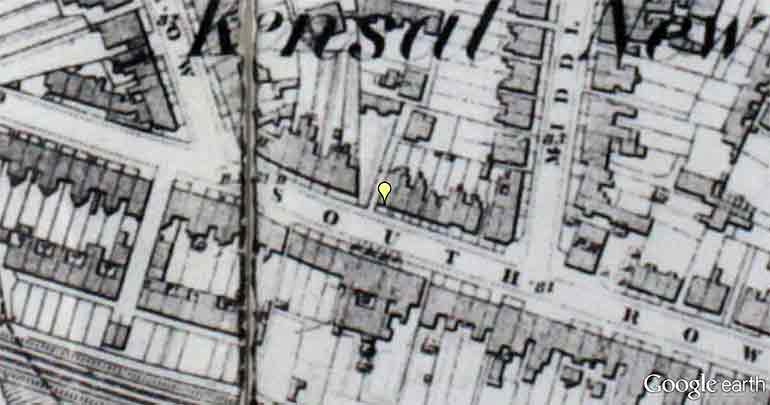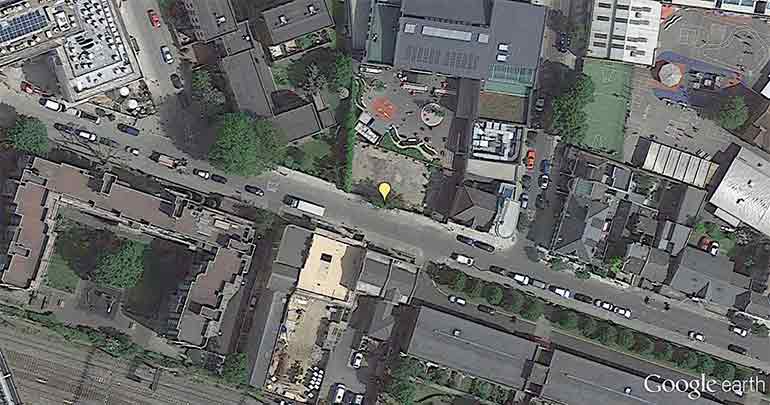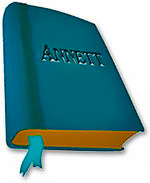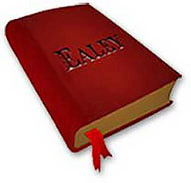AFTER much plodding through virtual streets in old maps and plotting-out of scribbled census schedules, I believe that the yellow marker below floats above Number 7, Kents Cottages, South Row, Kensal New Town, home of George and Euphemia Ealey from at least 1851 to 1854.

(Above) A piece of the 1862 OS map (© Crown Copyright) kindly provided by RBKC Local Studies & Archives, overlayed on Google Earth.

© Google Earth. Image Landsat. © 2016 Infoterra Ltd & Bluesky. Image © 2016 Getmapping plc.
South Row is now called Southern Row and bears little resemblance to the Ealeys' patch. There's an interesting picture-tour of the street here using images from the late sixties, but by then Kents Cottages had long gone.
The main "Rows" of Kensal Town—West, Middle, East, and South—had been built during the 1840s, following the paths of existing field boundaries. Cottages and small terraces went up along their sides. So it really was a New Town in George's day. Despite its reputation as a Laundry Colony, many cottagers kept pigs and grew produce in their gardens, local historian Florence Gladstone ascribing a semi-rural aspect to parts of the town even up to the end of the nineteenth century.
Kents Cottages seem to have been named for their Landlord, Robert Kent, described in the 1851 census as a proprietor of houses, but as a builder in his will and subsequent Chancery Suit. Kent owned (and had perhaps built) eleven cottages in South Row, each one bringing in an average of five shillings per week in rent. Recently he had moved from Kensal New Town to the Devonshire village of Kingskerswell, no doubt with an eye to future profit from the developing commuter hub.
A Houseful, a Streetful, a Skinful?
On the night of the Census, the 30th of March 1851, George and Euphemia and their younger children are at home in Number 7, most likely taking up no more than a couple of rooms, and perhaps paying about 1s 8d per week for them. Thirty-eight-year-old George describes himself as a stable servant (though it is seven years since he left the employment of the Royal Mews), and thirty-one-year-old Euphemia as a laundry servant. Eldest daughter Mary, aged eight, is absent: she and her cousin Thomas are with grandparents James and Mary Ann in their lodge at the Triumphal Arch in Green Park, where James earns his living by sifting the toffs from the chaff. Five-year-old George junior is home with his parents, as is one-year-old daughter Sarah. A pair of visitors—twenty-five-year-old Henrietta Bennett and one-year-old Joseph Bennett—complete the household.
The remaining rooms of Number 7 seem to be divided between two families: Phineas Firth, a thirty-nine-year-old brush maker, with his forty-four-year-old wife Caroline and children John (eleven), Charlotte (eight) and William (nine months); and twenty-six-year-old bricklayer Alfred Judd, with wife Mary (twenty-four) and baby daughter Martha (six months).
So. Four young babies, three children and seven adults. A very noisy and probably pungent dwelling. Mary Judd is a Brummie. Her accent must sound like a strange song to the house full of southerners.
To the right as you step out of Number 7 in 1851 is a block of five houses called Warwick Terrace, where the Ealeys' neighbours include a widowed laundress, a lamp-lighter, a retired milkman, a dressmaker, and a young police officer. Two houses lie empty, then there's The Foresters' Arms on the corner, very handy at a brisk six doors down. Equally handy in the other direction is the Prince of Wales, on the corner of South Row and Middle Row. Between the Ealeys and the Prince of Wales live a guard from the Great Western Railway, three labourers, an ironer, a tailor's wife, a carpenter, two laundresses, a farmer's man, a greengrocer, a bricklayer, a general dealer, and a plumber/glazier/painter, all with their families and fellow-dwellers in varying quantities. In total, eighty-two souls occupy the space between the Prince of Wales and the Foresters Arms, most of them local Middlesexers, but there are also voices from the North, the Midlands, the South-East and the West Country, with a couple of Limerick lilts thrown into the mix.
Pennies from a Queen
Two more Ealey children will come along in Kents Cottages: James in March 1852, and Euphemia in February 1854, bringing joy and worry in equal measure and no doubt contributing to the hardship that prompts George to petition the Royal Household for help.
In March 1853 Landlord Robert Kent dies, apparently in debt to several Devonshire plasterers, builders and timber merchants, who by the end of the year are suing widow Susan and her new husband through the Court of Chancery. How this development affects the tenants of Kents Cottages is unknown, but we can assume that the need for rent collection is more pressing than ever, and by March 1854 the cottages in South Row are up for sale.
Meanwhile, Colonel the Honourable Charles Beaumont Phipps, Keeper of the Privy Purse, has presented George's petition to Queen Victoria, the little girl whose first pony carriage George had driven as postillion when a boy. The winter of 1853 has been unusually bitter, with temperatures hard enough to turn ponds and lakes into ice rinks. The Queen knows that the poor, faced with high-priced fuel and provisions, are particularly at risk and is moved to donate £2 towards the family's relief, a sum which is enough to cover about five months' rent or buy around fifty loaves of bread. George's letter of thanks, in which he writes he "had not a morsel of bread for my children", is addressed from 7 Kents Cottages on the 31st of December 1853, a night when the thermometer of the Royal Humane Society's Receiving-House in Hyde Park registers 22½º Fahrenheit (-5º Centigrade).
Three weeks later, having apparently found work as a labourer at the Western Gas Works, a few hundred yards away, George sets off from Number 7. He will not be coming home.

